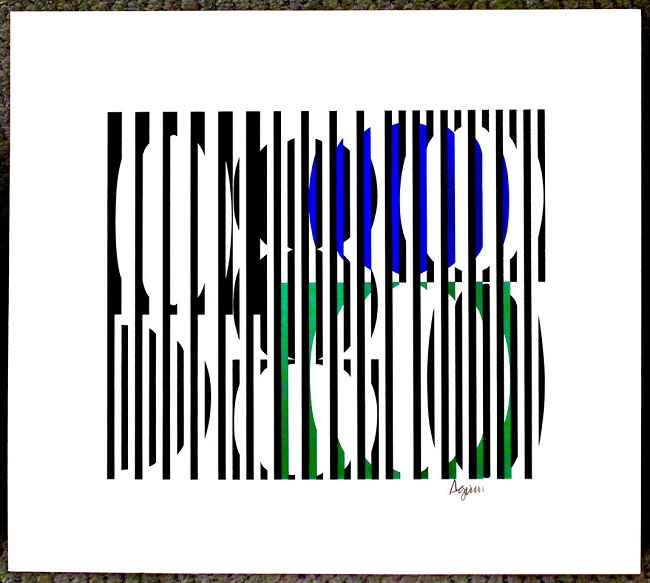How to Hang Fine Art at Home

“Birth” Experimental Proof by Yaacov Agam
For lovers of art, it isn’t uncommon to end up with a box or two of beautiful artwork, framed or unframed. You may love every piece, but you have no clue how or where to put it in your house. Thankfully, this skill doesn’t have to be so daunting. Here are some basic tips on how to hang fine art in your home.
Plan First
Before taking a hammer and nail to the wall, you may benefit from mapping out your artwork display ideas on the floor or a piece of paper. You can experiment with different arrangements, such as symmetrical or asymmetrical, dark and light, to find the best balance. Make sure to protect art pieces according to the medium; avoid hanging fragile mediums in direct sunlight or humid conditions.
Trust Your Instincts
When plotting out your design, you can trust your instincts. You will be able to tell at least to some degree what looks right and what looks ‘off’. Sometimes, it can be tempting to hang fine art higher than the average eye level; when in doubt, it is better to hang a bit lower. Look for cues from furnishings and architecture like seating, mantles, or windows to help fit the artwork in at the right spot.

Santa Fe”, framed Serigraph by Yankel Ginzburg
Use a Measuring Tape
Next, you will need a measuring tape, a pencil, and possibly some removable painter’s tape. A small bubble level can also be helpful. Typical rules for hanging fine art include keeping the center, or focal point, of a painting at average eye-level, and separating multiple ones by around 4 inches. The average eye-level height is 57 inches.
Two Hooks Are Best
After marking the desired height on the wall, divide the frame’s width into thirds. You will need to place one hook on the wall at each of those one-third and two-third across positions. The bubble level will assist you in placing those two hooks at an equal height. Those two hooks will always keep your artwork level and will avoid any need to repeatedly adjust a picture back to level position. Having two hooks is also safer. When planning to hang multiple art pieces together, one can mark the corners of the total wall space with painter’s tape for visual reference.

“Birth” Experimental Proof by Yaacov Agam
Diversify Design
It can be tempting to hang all your artwork in straight rows and columns, and in some cases this works wonderfully. At the same time, allow yourself to diversify the pattern with asymmetry or staggering. You can also add other elements into the display, like a hung artifact or sculpture. A cluster of smaller pieces can add interest to a wall. Something very large may look best as a focal point, and should stand out on the wall rather than being too close to the next piece—maybe just the only piece on a small wall. Also, double-hanging artwork, one above the other around the room, creates a great ‘gallery look’!
Leave Blank Space
You don’t have to cover every inch of wall space you have. Blank walls can have some beauty of their own and add focus to the artwork that is already in the room. If your art collection is still growing, though, it’s also a way to leave room for future prized possessions.
Contact Zimmerman Fine Art Today!
Since 1979 Zimmerman Editions Ltd. has worked closely with many internationally acclaimed artists to execute editions of their most unique images. Collaborating directly with the artists, Zimmerman Editions’ atelier has printed, fabricated, and published many special limited editions of fine art, including both prints and sculptures. All images have been faithfully produced to meet the artists’ most exacting requirements. Many of these high-quality art prints and objets d’art are represented in public and private collections around the world.
If you are a fine art dealer or marketer, or interested in collecting contemporary fine art, contact us today through our short form or our number at 888-484-1850. For more about fine art, keep in touch through Facebook, Twitter, and LinkedIn!
